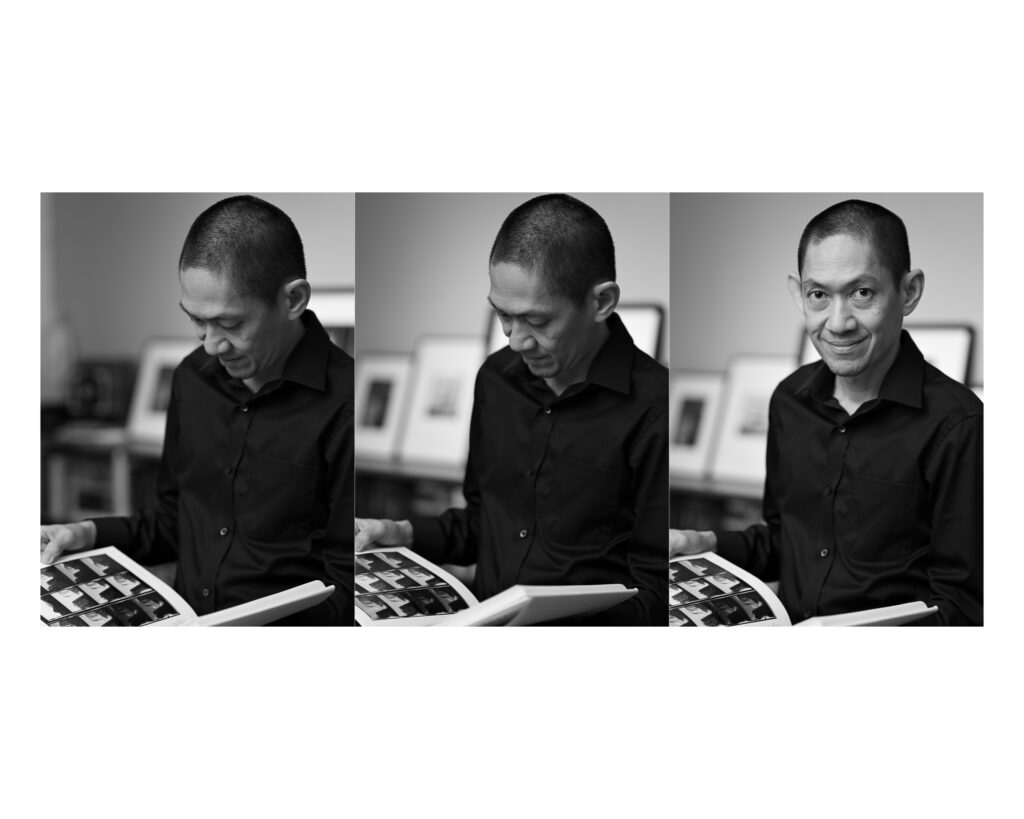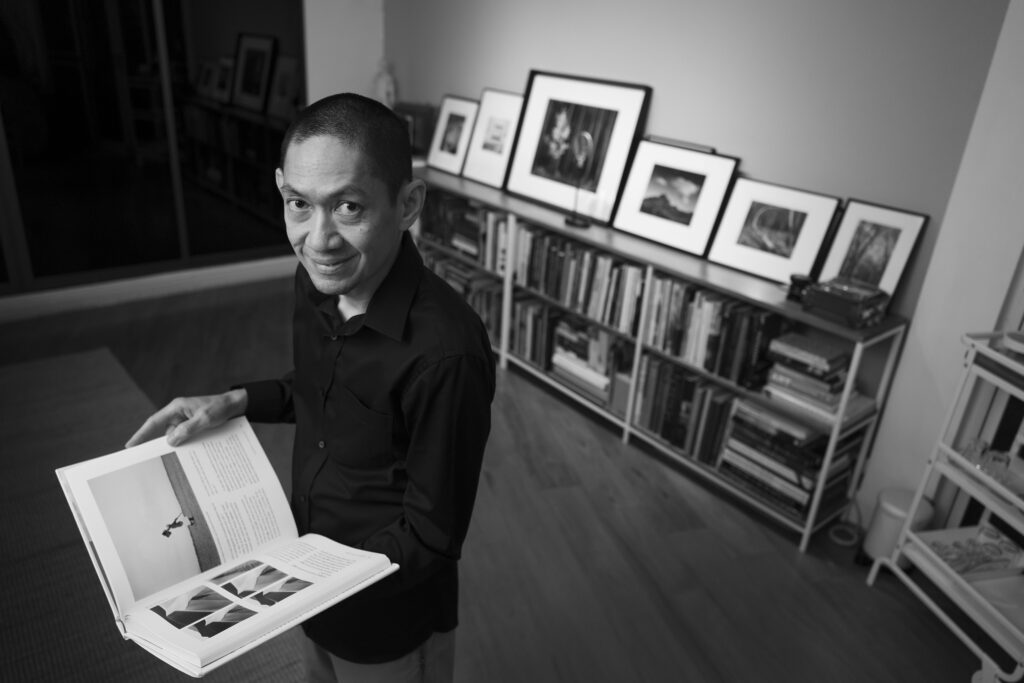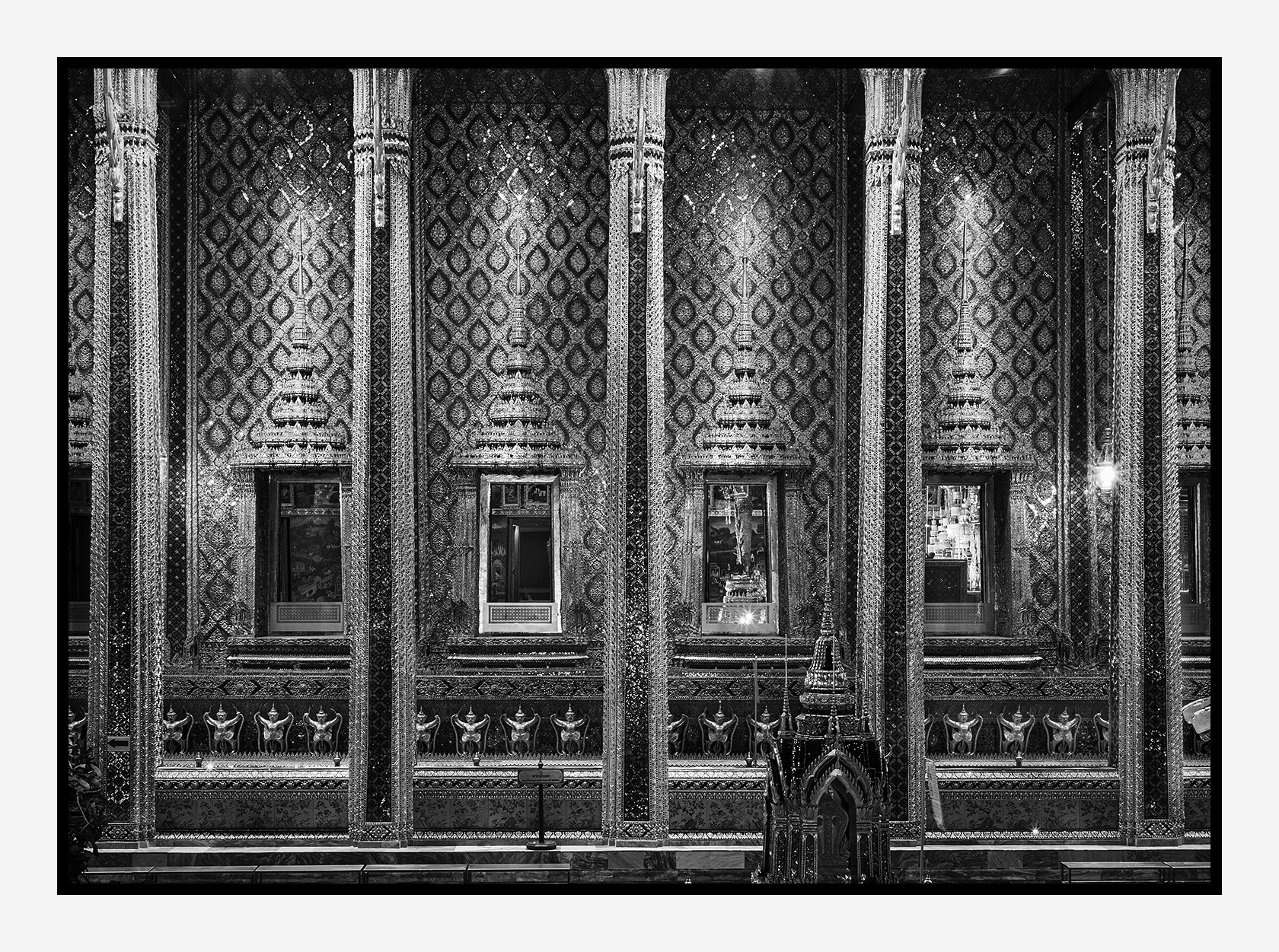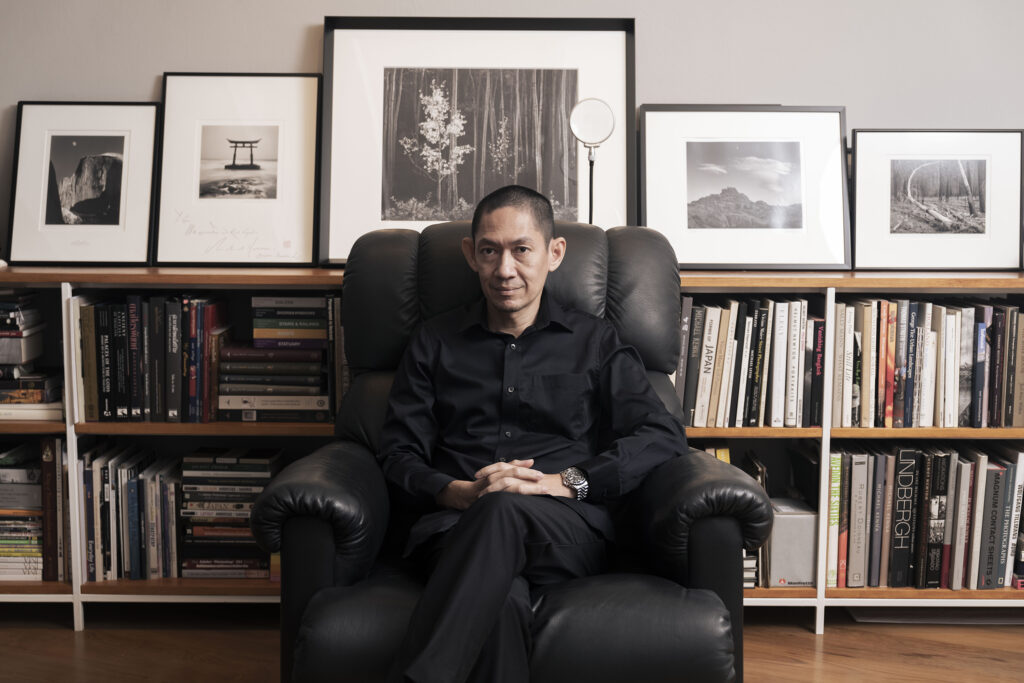Photographer: Virunan Chiddaycha
Translator : Dr.Wattana K
The Beginning
“I didn’t start from the passion of photo taking,” Gun Susangkarakan, aka ‘Kru Gun,’ warmly invited us into his house. That made our stress disappear. “I like toys and a camera, for me, is also a piece of toys. Its mechanism brings me joy. I like playing with remote control cars to the extent that I seriously joined the competition. I quit because I had to sit the university entrance exam.”
Despite his liking of mechanisms and majored in Math-Science, he chose to study Political Science. “I chose the Math-Science Program because no good students chose the Art Program. It is because if you study Math-Science, you can choose various fields of studies at the university level. I chose Art-Math when I sat the university entrance exam, though. The elite faculties for Math-Science high school students in Thailand are Medicine or Engineering. Physics, Chemistry and Biology are not my favorite and those two faculties are not my way of life. Chemistry may be OK and the scores for Math are mediocre. That made me change to choose Political Science, the not-too-difficult field of studies.”
Kru Gun’s path to photography started from before getting into university. It simply started from high school days of joining the group activity to sell things in class. “My friends and I gathered for the school activities. I just wanted to take photos as a record of memory. I took photos with a plastic camera from my home. In my senior year, I acted as a photographer working with a professional school photographer taking photos of my classmates. Those photos were used to make our yearbook. That was actually my starting point.”

“During the period of four years studying Political Science, I was more serious about photo taking than studying,” he recalled his memory with a bright smile. “I took photos of every faculty activity. During the semester break, I joined the Faculty of Science Photography Club. The lecturer took us all over the country. It was a serious activity. The lecturer, himself, likes nature travelling and also is adventurous. Apart from that, my father is a survey engineer. He didn’t take me camping because he has worked in camps his whole life. He wanted to live a comfortable life at home. The father’s happiness keeps the son out of the camping adventure. I had an opportunity to go camping at the university.”
Although photo taking may seem his major activity rather than studying, it did not come close to photographing as a career. That was our comment. When it really started, we wondered. “After graduation, I decided not to waste my four years getting back studying photography. I would study a Master degree and take a short course in photography instead. The Master degree seemed like a guarantee for life security. Photographer became my real job after coming back from studying abroad, not the time of me graduating the first degree.”
Thailand’s economic crisis, Tom Yum Kung Crisis, awaited him back from studying abroad. “I graduated in International Commerce. There was no career choice in that economic situation. Half of the workers were laid off. What could a young, inexperienced graduate with only the degree paper do? I took my 10-photo portfolio and kept applying to be a photographer. One day, Uncle Cham (Chamni Thipmanee) asked to see my portfolio and interviewed me. He told me to ‘do your own work of art’ or something like that. I cannot remember for sure.”
After exhaustively applying for a job, Kru Gun started his behind-the-camera career as a lecturer at King Mongkut’s Institute of Technology Ladkrabang. He also works as a photographer taking cover photos for the albums of foreigner artists whose agency is in Thailand. He also shot behind-the-scenes slides for many well-known Thai films. The first subject he taught is ‘black and white dark room.’ “What makes me be a lecturer for a long time? It’s so difficult a question to answer,” he murmured and sat still for a while. “Oh, I got it. I have little work as a photographer. I, thus, have time for teaching. If I am a photographer who has lots of work, I won’t have time to teach. The major factor is that I have little work, so I can easily manage my time teaching. I mean, you have to choose. If you choose to be a highly commercial photographer, you have to quit teaching. I choose to be both a freelance photographer and a freelance lecturer, in a balanced way.”

The Process
One thing a ‘content’ person like us tends to ask a ‘visual’ person is how he can alter the colorful picture of the real world to a monotone one on film or paper, how he knows what shades of grey can represent what color. This is the question I always, passionately, ask the photographer. This time is no exception. “The presenting of color pictures into the monotone, for me, is the change of the weight of the pictures in my head.” He explained it as if it is as simple as living everyday life. “I see the pictures in front of me and I immediately know how the weight of white-grey-black could be. I can see through the process in the dark room that this spot would be too white or too black when actually entering the dark room. This comes absolutely from experience. Black and while photos contain only two tones: white and black. That can compare to two sounds in music: high and low, and how we can compose music beautifully. The black and white photos are how we manage the weight of white and black, how the shade of grey looks. For me, this is purely instinct. There is no strict formula. No artistic explanation can be 100% academically given. If so, everybody can equally compose beautiful songs.”
It can be clearly seen that the colorful pictures, through Kru Gun’s experienced eyes, transformed to the perfect process of making them black and white. I really wonder and naively asked him of his adjustment in the changing from the dark room process to PhotoShop process because I believe that the process between the dark room and the computer screen is totally different. He just smiled at my naive question, “Not many people know that I studied PhotoShop version 3 when I studied abroad.” I raised my eyebrows in amazement. “Then, I learned about the PhotoShop and dark room process at the same time. So, for me, I look at everything as one. PhotoShop can correct the unwanted scratch on films that cannot be done in a dark room. They work together.”

© GUN SUSANGKARAKAN
“For me, the dark room process and the PhotoShop process are the same.” He took an old, yet well cared book for us. “Film data that John Sexton made for Ansel Adams are the film curves transformed in PhotoShop. They are the same thing. The developer is John himself. When the program of PhotoShop was first developed, he consulted Charlie Cramer to study the process in the dark room. The PhotoShop tools have been duplicated from the analog process in the dark room. If you understand these basics, digital and analog are not different.”
Which tools, thus, does Kru Gun believe more? This seems to be an embarrassing question because it seems that he has already answered it a while ago. Again, he smiled and gave me an answer, “My body cannot carry them.” He glanced at all the heavy equipment our team took to the interview that day. “When I was young and strong, I carried the camera until my back hurt. Now I use only the trolley and choose the comforts to my body. I choose as much equipment as necessary if the location I can drive to and is near enough to carry my camera, the films can be used. I won’t carry the tripod together with the headlight any longer. That will be saved for the really essential commercial work.”
The digital and analog process may be similar, in practice, it is absolutely different. That was the comment from our photographer. The photographer (and our executive editor) asked as if he knew that it is what I really wanted to ask. “At the moment, I like digital,” he answered without any hesitation. “Because it is absolute. It widens our imagination because it can control all of the things we can’t do in the dark room. For the analog process, I did it all. Both contrast control which is very difficult. I had to think of how I wanted the weight to come out before shooting. The films had to be flashed to reduce the contrast and enlighten the dark area. The finishing process must be controlled. Flashing the paper is needed before printing. I have done it all. I felt high the time I could do it. I felt I was successful when I studied with John. I could not print well before learning with him. I could not assess the weight perfectly with my eyes. Not long after I became his student, I changed totally. It is finished.”

The Master and The Apprentice
The coming of the Master, John, can be considered Kru Gun’s life changing factor. That is my remark. If so, I wonder what the importance of the relationship between the master and the apprentice is. “The photography work is on-the-job training,” he answered immediately. “It is the thinking system of vocational education. The school I studied in the United States is a vocational school. You study for two years and then you can go straight to the job market. The first degree is unnecessary. That is what I think.”
We wonder if there is anything Kru Gunn has not done after exhaustive experience of the grey world both in analog and digital. “Everything responds to me fully the way I do in the digital world,” he smiled. “The next challenge is the combination between films and digital.” I raised my eyebrows. “I mean digital print on the silver paper. Because the digital is not ultimate in that it is untouchable. The touchable printing process is nowhere to be done unlike the dark room process. The digital is the process that goes more through the heads, less through the hands. I still enjoy the slimy feels of chemicals. The more it stinks, the more I like to smell it.” His final remark simultaneously draws smiles from both the photographer and all the assistant photographers in the room.

